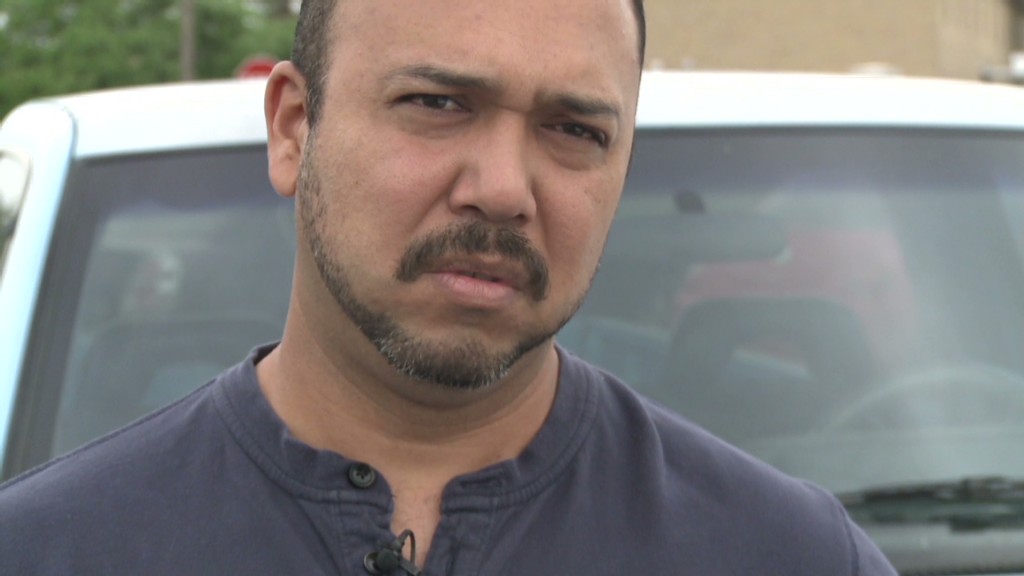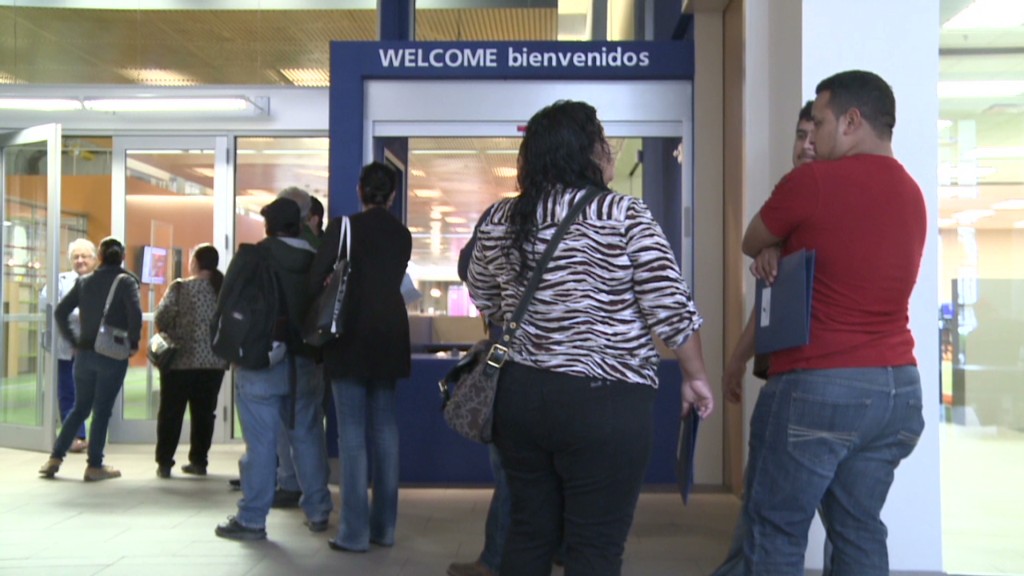
About 8 million people have signed up for Year 1 of Obamacare, but millions of others are still falling into the law's "coverage gap."
They earn too much money to qualify for Medicaid, yet don't make enough to get federal subsidies to buy private insurance on an Affordable Care Act exchange.
The human toll of the coverage gap can be found all too easily in Hidalgo County, Texas, where less than half of non-senior adults had health insurance in 2012.
"If Obama did this market so we can get affordable insurance, why are we still having a lot of problems? What's going on?" asked Anna Covacevich, a 57-year-old home care provider and Hidalgo County resident who made $8,000 last year.
Related: Got Obamacare, can't find doctors
People like Covacevich were supposed to be helped by Obamacare.
The Affordable Care Act expanded Medicaid to cover everyone with incomes up to 138% of the poverty line. But the Supreme Court ruled that states could opt out of the expanded federal program -- and 24 states have done just that.
Texas is one of them.
Governor Rick Perry has said Medicaid needs to be reformed to emphasize personal responsibility and that the expanded program will be too expensive.
In Texas, a childless non-disabled adult is not eligible for Medicaid, and a parent with two children is only eligible if he or she makes less than $3,737 a year.
At the same time, anyone who makes less than the poverty line ($11,490 for a single person and 23,550 for a household of four in 2013) does not qualify for an Obamacare subsidy for private insurance.
"Those people are caught in between. They're just going to stay the same. Nothing they can do," said Raquel Vargas, a Healthcare.gov application counselor at Nuestra Clinica Del Valle, a nonprofit medical clinic in the county.
One day in late March, more than half of the people Vargas met with fell into this category -- not qualifying for a subsidy but not poor enough for Medicaid.
Related: Who makes the big Medicare bucks

Nationwide, about 5 million people are in the "coverage gap," according to the Kaiser Family Foundation. In Texas alone, the number is 1 million.
Raquel Calderon, 55, her arm in a sling after a recent injury, doesn't have insurance and falls just under the poverty line. She's paying for her treatment out of pocket. "I consider myself healthy, except for the fall."
Jose Canchola, a 50-year-old laborer who works in the onion fields, says he can't afford insurance. "I know that I need to see a doctor," he said.
Meanwhile, the uninsured continue to visit nonprofit medical clinics for their health care.
"I hope that one day everybody can receive the care that they need, and that's why we're here," said Rebecca Stocker, who runs the Hope Family Health Center, treating only uninsured individuals. "But it's scary, and it's sad to be on the front lines."
Danny Ordaz, who has 8-year-old twin boys, has never had health insurance. When his children get sick, he takes them to Reynosa, Mexico. "It's cheaper," he said.
Hospitals just south of the U.S.-Mexico border advertise medical treatments on their websites. A "basic check-up" at one hospital includes blood work, a urine analysis and chest X-rays for $160.
Covacevich, the home care provider, said she would be happy to pay something for insurance. "What I could afford would be from $70 to $100 a month. That would help me a lot," she said.
But for comprehensive coverage, that just is not an option for Covacevich, or for millions more across the country. The most affordable plan on the exchange that Covacevich found would cost her $227 a month because she does not qualify for the federal subsidy.


